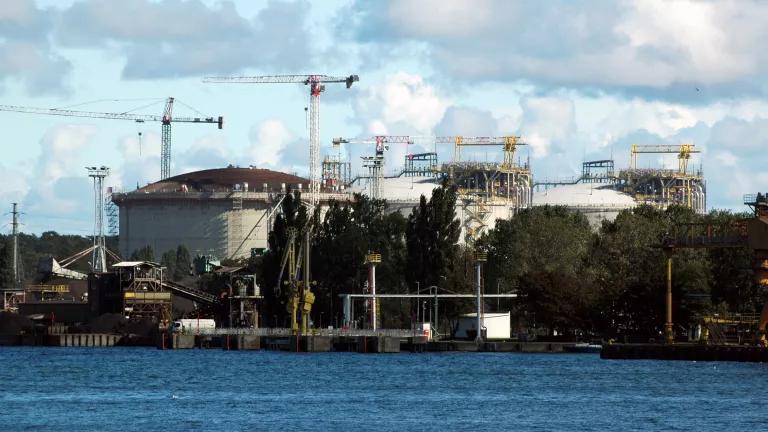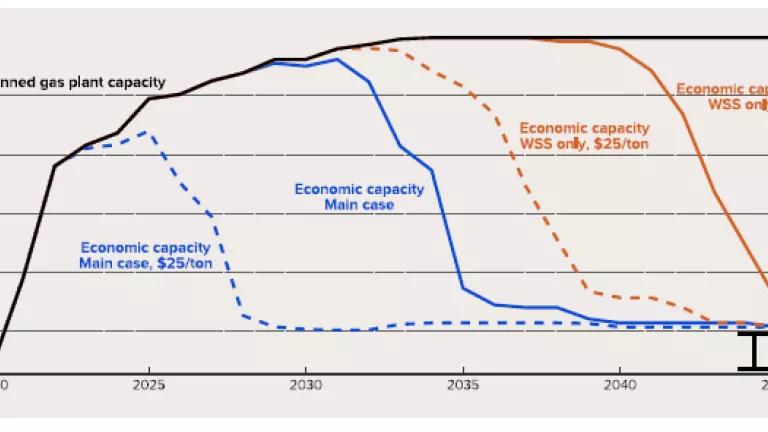Energy Efficiency Jobs Soar: Now Make Them Available to All
Energy efficiency once again leads in new job creation across the sector, further cementing clean energy’s position as a powerful economic driver.
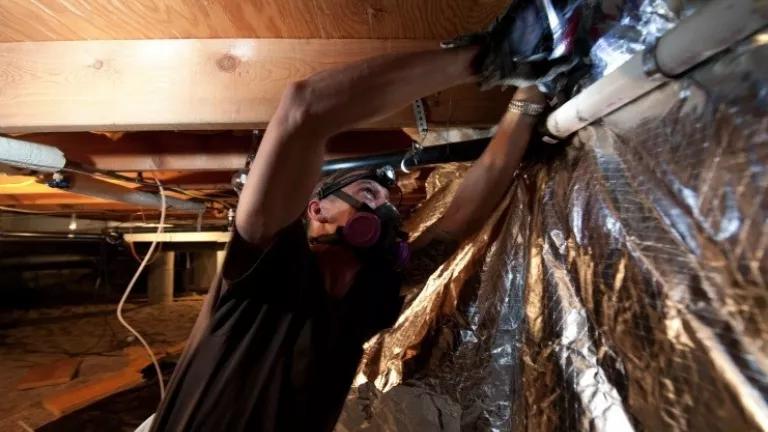
Energy efficiency leads in new job creation across the nation’s energy sector for the second year in a row, further cementing clean energy’s position as a powerful economic driver. A new report, diving deeper into 2019 U.S. Energy and Employment Report data, found that energy efficiency accounted for half of the energy industry’s overall net new jobs in 2018, and employs twice as many U.S. workers as the entire fossil fuel industry.
These jobs are a critical part of the clean energy transition. We need people to upgrade our homes and businesses to cut dangerous greenhouse gas emissions and fossil fuel pollution, which improves air quality and therefore our health. What’s more, when policies are designed well, high-quality efficiency jobs can provide economic opportunity for communities that need it the most.
Dennis Schroeder, NREL
According to the report released today by E2 (Environmental Entrepreneurs) and E4TheFuture, in partnership with BW Research, energy efficiency is advancing sustainable, long-term economic opportunities for Americans across the nation, fostering not just good jobs, but stable careers that can’t be outsourced. These jobs include making new and existing buildings more efficient, upgrading and repairing heating, ventilation, and air conditioning (HVAC) equipment, manufacturing ENERGY STAR®-certified appliances, and designing and constructing high-performance buildings.

Energy Efficiency Jobs in America, E2 & E4TheFuture
This is great news for the economy and for cutting our energy waste. Decision makers need to ensure this continues and that these jobs are high-quality (e.g., family-sustaining wages, benefits, training programs, and a career path) and accessible to everyone. This is especially true for workers with greater barriers to entry into the clean energy job sector, such as those who are low-income, minorities, or live in disadvantaged communities.
Why Advance Energy Efficiency?
In addition to the benefits for workers, efficiency is key when it comes to solving our climate crisis and reducing energy bills. This is particularly crucial for low-income Americans who dedicate an outsized portion of their income to keeping their homes comfortable and their appliances and devices powered. Improving efficiency can also mean avoiding making the difficult decision of whether to pay an energy bill or meet other basic needs, like obtaining medical attention and food.
In addition, more energy efficiency means cleaner air for everyone, since reducing energy consumption decreases the amount of fossil fuels that need to be emitted to power homes and businesses. Implementing such commonsense initiatives could help save up to six American lives each day, and avoid up to $20 billion in health harms annually. Efficiency also decreases emissions that drive climate change. Plus, it reduces the need to search for fossil fuels on public or private lands and in our waters. Measures like weatherization, insulation, and efficient windows cut moisture inside the home, reducing mold and other respiratory irritants. And workers are needed to install those measures.
Efficiency is also critical to delivering a more reliable and affordable power system. It can reduce demand and stress on the grid, especially during extreme temperatures, which will result in fewer blackouts. This means less disruption to the economy and fewer instances where the most vulnerable population is exposed to dangerous heat.
What Types of Jobs Are They?
Nearly 3.3 million Americans are working in clean energy, including renewable energy, energy efficiency, and clean transportation. Construction jobs comprise almost 60 percent of energy efficiency’s 2.3 million employees, and those numbers continue to climb: As of 2018, more than 1 out of 7 U.S. construction workers spent half of their work time or more on increasing energy efficiency in America’s buildings.
Nearly 1.1 million jobs are in HVAC, which is more than all of America’s lawyers, court reporters, judges and paralegals combined. What’s more, the second most efficiency jobs—more than half a million—are in manufacturing and installing ENERGY STAR®-certified appliances and lighting, and nearly 360,000 jobs are in the buildings materials & insulation category--more than the entire U.S. agricultural workforce.
Energy efficiency businesses are creating more jobs than traditional energy sectors and are paying higher wages than the national average. What’s more, the report numbers are specific to the energy sector, meaning jobs in retail trade, vehicle efficiency-related work, and the 4.2 million jobs related to efficient manufacturing processes are excluded. These numbers also don’t factor in the jobs created to support increased spending in the local economy now that businesses and residents have more money in their pockets thanks to lower energy bills.
Who Holds These Jobs?
Energy efficiency is also leading the energy sector in employing veterans, with nearly as many veterans working in efficiency as fuels, electric power generation and transmission, distribution, and storage combined.
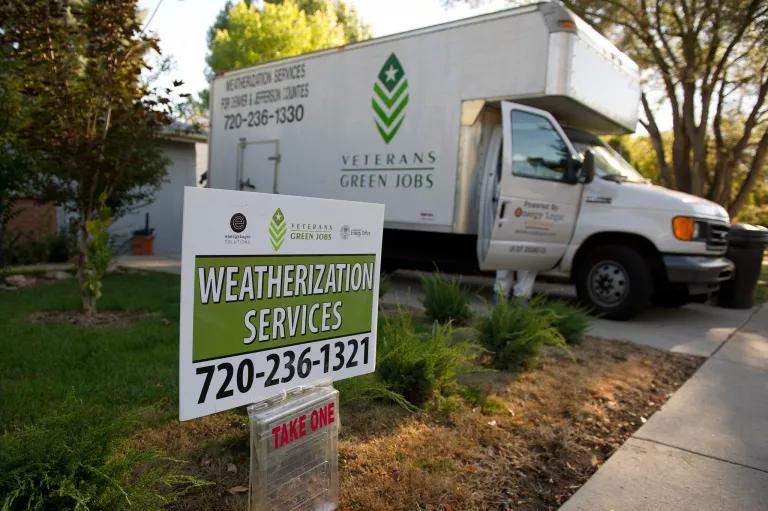
Dennis Schroeder, NREL
You can also find efficiency workers from large cities, small towns, and rural communities. Energy efficiency jobs are available in 99.7 percent of U.S. counties. While America’s top 25 metro areas employ nearly 1 million workers in energy efficiency, there are still over a million jobs in areas outside big cities. In fact, well over 300,000 Americans in rural areas work in energy efficiency.

Energy Efficiency Jobs in America, E2 & E4TheFuture
These jobs aren’t only in California and New York: The report found that New Mexico enjoyed the most job growth in 2018, followed by Nevada, Oklahoma, and Colorado.
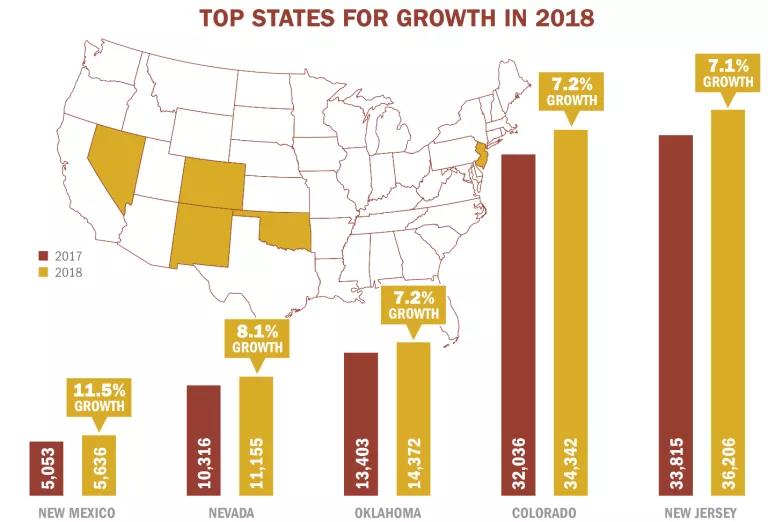
Energy Efficiency Jobs in America, E2 & E4TheFuture
Yet as we learned earlier this year, women and minorities continue to be underrepresented. This situation provides a crucial opportunity for decision makers to design programs and policies that lift up those workers who face numerous barriers to entry to ensure that everyone has access to quality energy efficiency careers.
How to Create More Energy Efficient Jobs?
In order to continue this happy trend of creating hundreds of thousands of high-quality, family-sustaining jobs for Americans, it’s important to:
- Keep pressure on Congress to fund bipartisan efficiency policies and programs, like the State Energy Program and Weatherization Assistance Programs, ENERGY STAR®, and renew commercial and residential building tax credits.
- Support strong energy efficiency policies and programs at the state and local levels to create the demand for skilled workers.
- Link public funding to strong energy efficiency quality standards that ensure equipment is being installed by skilled workers.
- Integrate quality assurance programs that are designed to make sure the work was done well and confirm the expected energy and cost savings were achieved.
- Train workers through paid programs that have a pathway to actual high-quality jobs.
Advancing these policies can create lasting quality careers that provide a pathway out of poverty. But this is only possible if policymakers make sure the right policies support and fund quality efficiency training programs that are easily accessible to everyone and linked to good jobs.
Energy efficiency can solve many of society’s problems at once: These workers not only reduce energy use--which cuts harmful climate pollution, improves indoor air quality, and makes our energy bills more affordable--they are instrumental in building a strong and healthy economy, which is most productive when everyone prospers.


